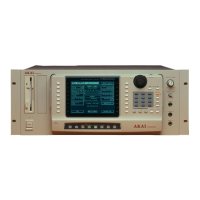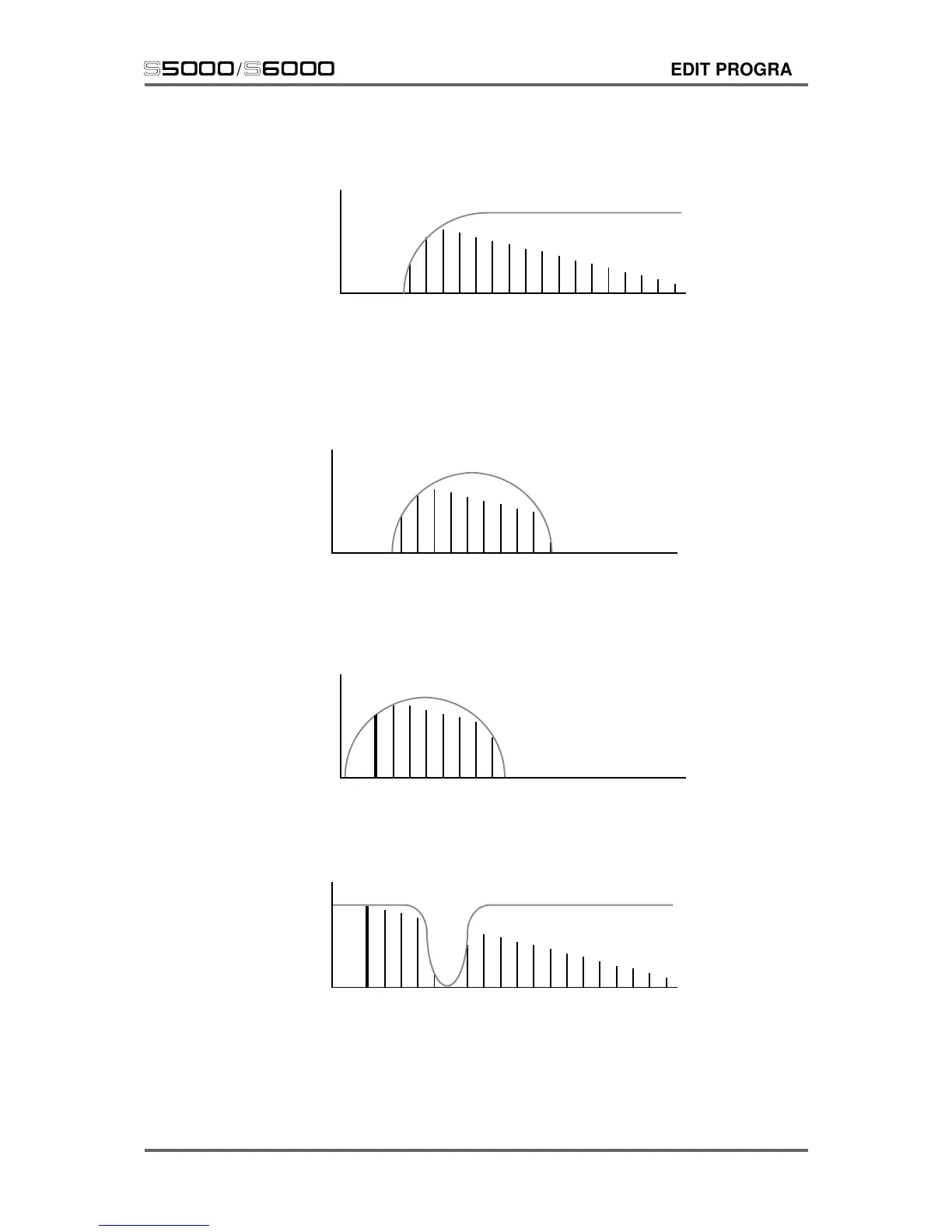Version 1.21 111
s5000
/
s6000
EDIT PROGRAM
A HIGHPASS filter is the opposite of LOWPASS in that it allows high frequencies to pass though
but removes or attenuates the lower frequencies:
FREQUENCY
L
E
V
E
L
This gives a characteristic ‘thin’ quality to the sound with the fundamental filtered out.
A BANDPASS filter lets a band of frequencies pass through unaffected whilst harmonics either
side of that band are removed or attenuated:
FREQUENCY
L
E
V
E
L
In the case of the BANDPASS, moving the cutoff frequency moves the band up or down the
frequency range thus lowering the cutoff would give this:
FREQUENCY
L
E
V
E
L
Another type of filter is the NOTCH filter:
FREQUENCY
L
E
V
E
L
The S6000 offers these and many more types of filtering options.

